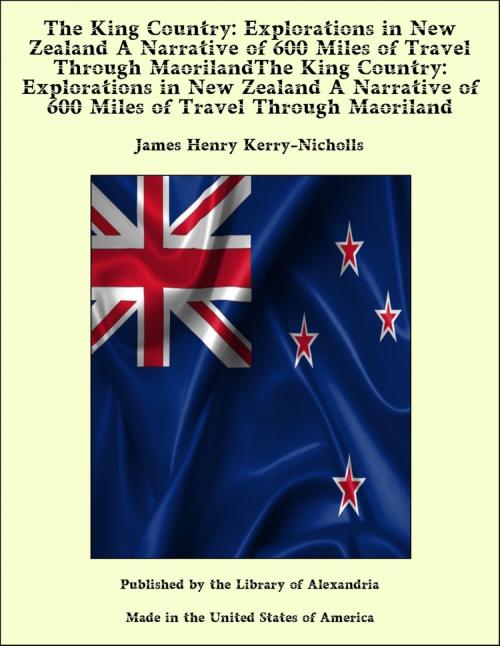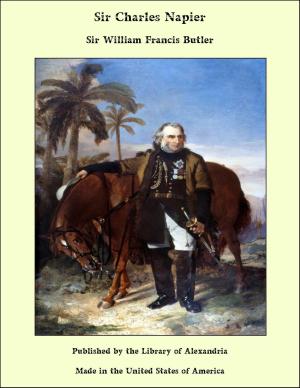The King Country: Explorations in New Zealand A Narrative of 600 Miles of Travel Through MaorilandThe King Country: Explorations in New Zealand A Narrative of 600 Miles of Travel Through Maoriland
Nonfiction, Religion & Spirituality, New Age, History, Fiction & Literature| Author: | James Henry Kerry-Nicholls | ISBN: | 9781465611055 |
| Publisher: | Library of Alexandria | Publication: | March 8, 2015 |
| Imprint: | Language: | English |
| Author: | James Henry Kerry-Nicholls |
| ISBN: | 9781465611055 |
| Publisher: | Library of Alexandria |
| Publication: | March 8, 2015 |
| Imprint: | |
| Language: | English |
IN publishing this record of travel, I have deemed it advisable to arrange my narrative under four principal divisions. In the introductory portion I refer to the leading physical features of that part of the North Island of New Zealand known as the King Country, relate the leading incidents connected with its history, describe the condition of the native race, and explain the object with which my journey was undertaken. The succeeding chapters deal with my visit to the Maori King when presenting my credentials from Sir George Grey at the tribal gathering held at Whatiwhatihoe in October, 1882. The description of the Lake Country includes my route from Tauranga, on the East Coast, to Wairakei, and which led me through the marvellously interesting region familiarly termed the Wonderland of New Zealand, while in the pages embracing my explorations in the King Country I record events as they occurred from day to day over a lengthy journey which was delightful on account of its novelty and variety, and exciting by reason of the difficulties, both as regards natural obstacles inseparable from the exploration of an unknown region under the unfavourable conditions by which I was constrained to carry it out, and the deep-rooted jealousy of the native race against the intrusion of Europeans into a portion of the island which is considered by them to be exclusively Maori territory. When it is considered that in company only with my interpreter, and with but three horses—ultimately reduced to two—and with what scant provisions we could carry, I accomplished considerably over 600 miles of travel, discovered many new rivers and streams, penetrated almost inaccessible regions of mountainous forest, found extensive areas of open plains suitable for European settlement, traced the sources of three of the principal rivers of the colony, examined the unknown shores of its largest lake, ascended one of the highest mountains of the southern hemisphere, experienced degrees of temperature varying from 80° in the shade to 12° below freezing-point, and successfully traversed from South to North, through its entire length, a territory with an area of 10,000 square miles, and which had been from the early history of the colony rigorously closed to Europeans by the hostility of the native tribes, it may be readily seen that the explorations, by their varied nature, disclose many important facts hitherto unknown concerning a vast and beautiful portion of New Zealand; and while they cannot fail to prove of practical utility to the colony, they will, I venture to think, be a welcome addition to geographical science. The map appended to this work may be said to form the most complete chart of the interior of the North Island as yet published. Up to the present time the extensive territory embraced by the King Country has, owing to the obstruction of the natives, never been surveyed, and consequently many of its remarkable physical features have remained unknown, the existing maps of this part of the colony being mere outlines. As, therefore, considerably more than half of the country traversed was through a region which was, to all intents and purposes, a terra incognita from the commencement of my journey, I adopted a system of barometrical measurements and topographical observations, and thus secured a supply of valuable material, which I mapped out from day to day, while the names of mountains, rivers, valleys, and lakes were obtained from the natives by the skilful assistance of my interpreter, who was at all times unceasing in his endeavours to carry out this part of the work with accuracy.
IN publishing this record of travel, I have deemed it advisable to arrange my narrative under four principal divisions. In the introductory portion I refer to the leading physical features of that part of the North Island of New Zealand known as the King Country, relate the leading incidents connected with its history, describe the condition of the native race, and explain the object with which my journey was undertaken. The succeeding chapters deal with my visit to the Maori King when presenting my credentials from Sir George Grey at the tribal gathering held at Whatiwhatihoe in October, 1882. The description of the Lake Country includes my route from Tauranga, on the East Coast, to Wairakei, and which led me through the marvellously interesting region familiarly termed the Wonderland of New Zealand, while in the pages embracing my explorations in the King Country I record events as they occurred from day to day over a lengthy journey which was delightful on account of its novelty and variety, and exciting by reason of the difficulties, both as regards natural obstacles inseparable from the exploration of an unknown region under the unfavourable conditions by which I was constrained to carry it out, and the deep-rooted jealousy of the native race against the intrusion of Europeans into a portion of the island which is considered by them to be exclusively Maori territory. When it is considered that in company only with my interpreter, and with but three horses—ultimately reduced to two—and with what scant provisions we could carry, I accomplished considerably over 600 miles of travel, discovered many new rivers and streams, penetrated almost inaccessible regions of mountainous forest, found extensive areas of open plains suitable for European settlement, traced the sources of three of the principal rivers of the colony, examined the unknown shores of its largest lake, ascended one of the highest mountains of the southern hemisphere, experienced degrees of temperature varying from 80° in the shade to 12° below freezing-point, and successfully traversed from South to North, through its entire length, a territory with an area of 10,000 square miles, and which had been from the early history of the colony rigorously closed to Europeans by the hostility of the native tribes, it may be readily seen that the explorations, by their varied nature, disclose many important facts hitherto unknown concerning a vast and beautiful portion of New Zealand; and while they cannot fail to prove of practical utility to the colony, they will, I venture to think, be a welcome addition to geographical science. The map appended to this work may be said to form the most complete chart of the interior of the North Island as yet published. Up to the present time the extensive territory embraced by the King Country has, owing to the obstruction of the natives, never been surveyed, and consequently many of its remarkable physical features have remained unknown, the existing maps of this part of the colony being mere outlines. As, therefore, considerably more than half of the country traversed was through a region which was, to all intents and purposes, a terra incognita from the commencement of my journey, I adopted a system of barometrical measurements and topographical observations, and thus secured a supply of valuable material, which I mapped out from day to day, while the names of mountains, rivers, valleys, and lakes were obtained from the natives by the skilful assistance of my interpreter, who was at all times unceasing in his endeavours to carry out this part of the work with accuracy.















